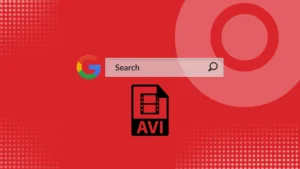
Introduction
Google Search has recently expanded its support to include AVIF image file formats, a move that will impact how images are displayed across various Google services, including Search, Images, News, and Discover. The AVIF (AV1 Image File Format) is known for its high-efficiency compression and superior image quality, making it a popular choice for webmasters. With this update, Google will now natively index AVIF images, eliminating the need for special handling or workarounds. This advancement promises to streamline image management for SEO professional, SEO agency and website owner, ensuring AVIF images are effectively processed and displayed across Google’s platforms.
What is AVIF?
AVIF (AV1 Image File Format) is an open, free-of-charge image format intended for high-efficiency compression. It uses the HEIF container format to hold photos or image sequences compressed with the AV1 video compression standard. AVIF competes with HEIC (High-Efficiency Image Coding), which employs the HEIF container format but compresses using HEVC (High-Efficiency Video Coding).
Google considers AVIF to be one of the most popular picture formats today due to its efficient compression and high-quality results. As an open format based on the AV1 video standard, AVIF promises higher image quality with reduced file sizes than competing formats.
What are the File Types Indexable by Google Including AVIF?
Google can index the content of most text-based files and certain encoded document formats. The most common file types we index include:
- Adobe Portable Document Format (.pdf)
- Adobe PostScript (.ps)
- Comma-Separated Values (.csv)
- Electronic Publication (.epub)
- Google Earth (.kml, .kmz)
- GPS eXchange Format (.gpx)
- Hancom Hanword (.hwp)
- HTML (.htm, .html, other file extensions)
- Microsoft Excel (.xls, .xlsx)
- Microsoft PowerPoint (.ppt, .pptx)
- Microsoft Word (.doc, .docx)
- OpenOffice presentation (.odp)
- OpenOffice spreadsheet (.ods)
- OpenOffice text (.odt)
- Rich Text Format (.rtf)
- Scalable Vector Graphics (.svg)
- TeX/LaTeX (.tex)
- Text (.txt, .text, other file extensions), including source code in common programming languages, such as:
- Basic source code (.bas)
- C/C++ source code (.c, .cc, .cpp, .cxx, .h, .hpp)
- C# source code (.cs)
- Java source code (.java)
- Perl source code (.pl)
- Python source code (.py)
- Wireless Markup Language (.wml, .wap)
- XML (.xml)
Google can also index the following media formats:
- Image formats: BMP, GIF, JPEG, PNG, WebP, SVG, and AVIF
- Video formats: 3GP, 3G2, ASF, AVI, DivX, M2V, M3U, M3U8, M4V, MKV, MOV, MP4, MPEG, OGV, QVT, RAM, RM, VOB, WebM, WMV, and XAP
(Source)
The Impact on SEO
Faster Loading Times
For years, Google’s algorithms have prioritised page speed as a ranking factor. Users’ expectations for fast-loading websites have only grown as the digital landscape has evolved. Slow loading times can increase bounce rates, lowering a website’s search rankings. By using AVIF pictures, websites can dramatically reduce file sizes, resulting in speedier load times. This speed boost can improve the user experience, lower bounce rates, and potentially improve a site’s position in search engine results pages (SERPs).
Enhanced Image Quality and User Engagement
AVIF’s ability to maintain good image quality at smaller file sizes can help boost user engagement. High-quality photographs are critical for catching and maintaining visitors’ attention, especially in visually stimulating businesses such as e-commerce, fashion, and photography. AVIF allows websites to display more precise, more colourful images without sacrificing load times. This mix of quality and speed can result in increased customer happiness and time spent on the site, both of which send positive signals to search engines.
Better Accessibility and Mobile Performance
AVIF photos, with their small size and great quality, are especially useful for mobile users. Faster loading times on mobile devices can increase accessibility for people with slower internet connections, improving content availability and the possibility of higher engagement and conversions.
Conclusion
Google’s new support for AVIF file formats marks a significant enhancement for webmasters and SEO professionals. With AVIF images now seamlessly integrated into Google Search, Images, News, and Discover, the need for complex workarounds is eliminated. This update simplifies image management, allowing for efficient use of high-quality, compressed images without sacrificing SEO performance. As you adapt to this change, remember to monitor your Search Performance reports to ensure smooth processing of AVIF images. Embracing AVIF can enhance your site’s visual appeal while maintaining optimal load times, ultimately benefiting both user experience and search engine rankings.